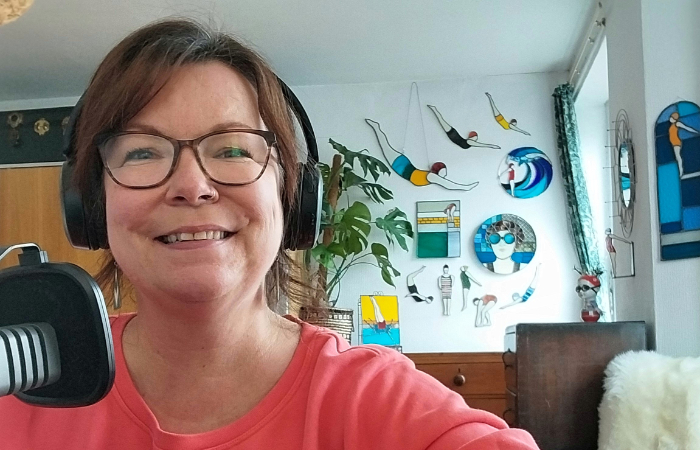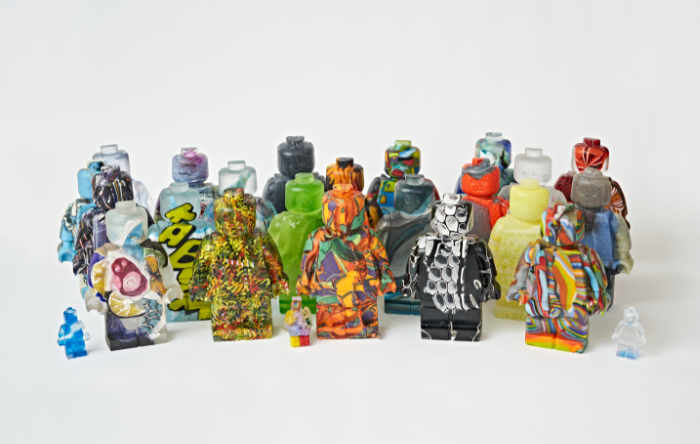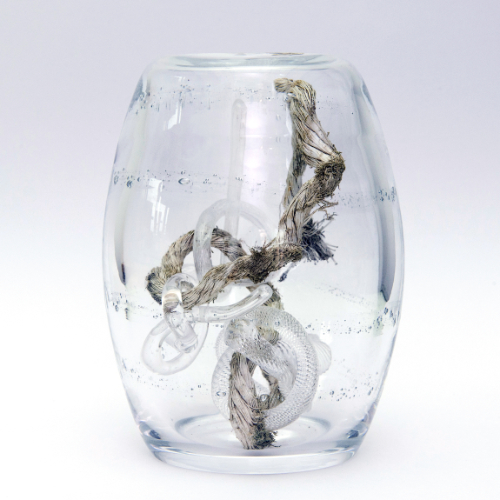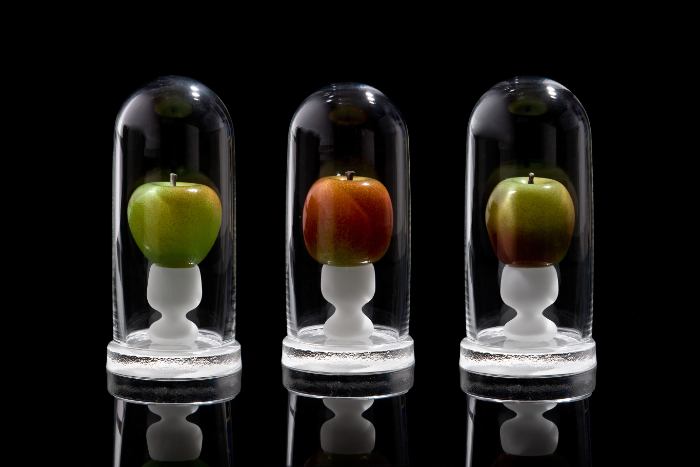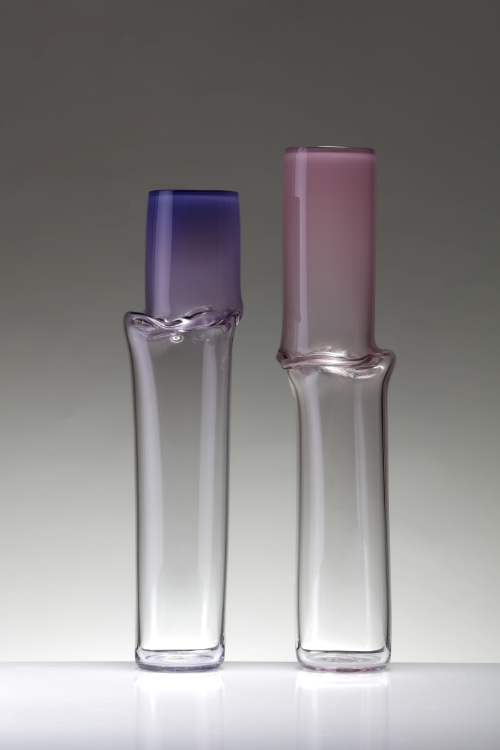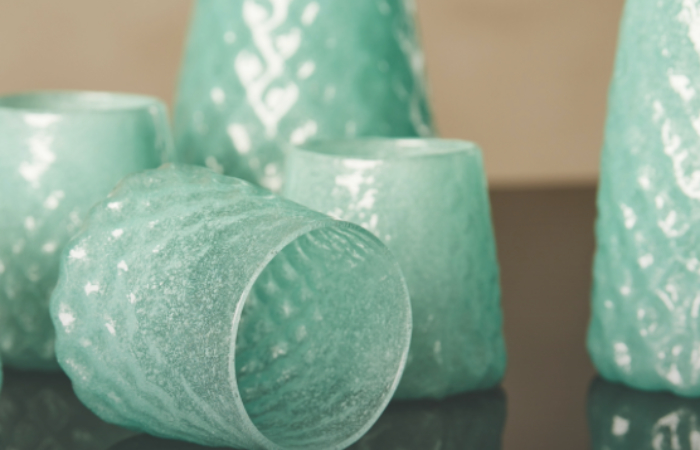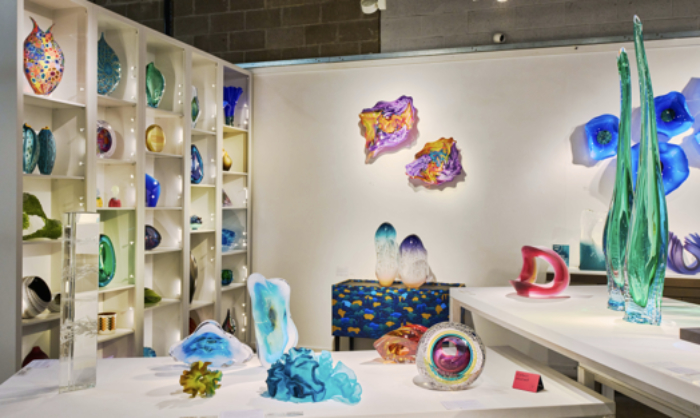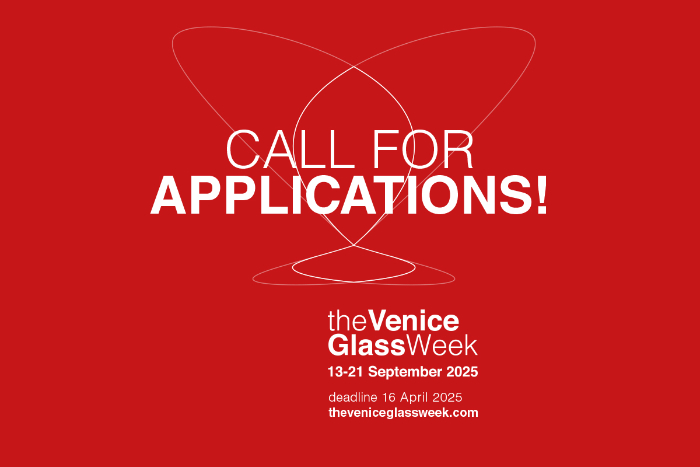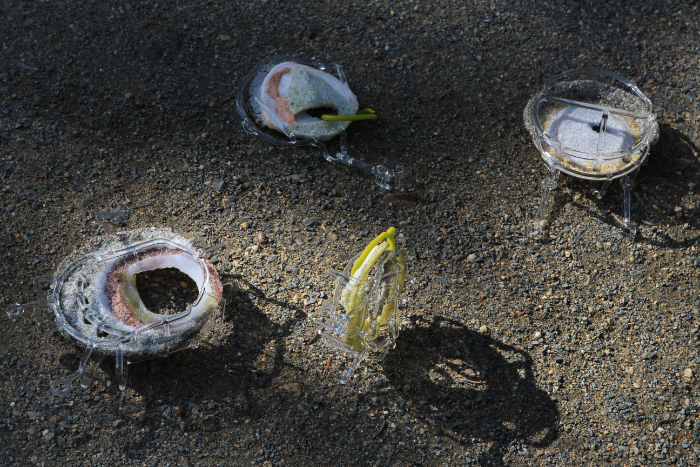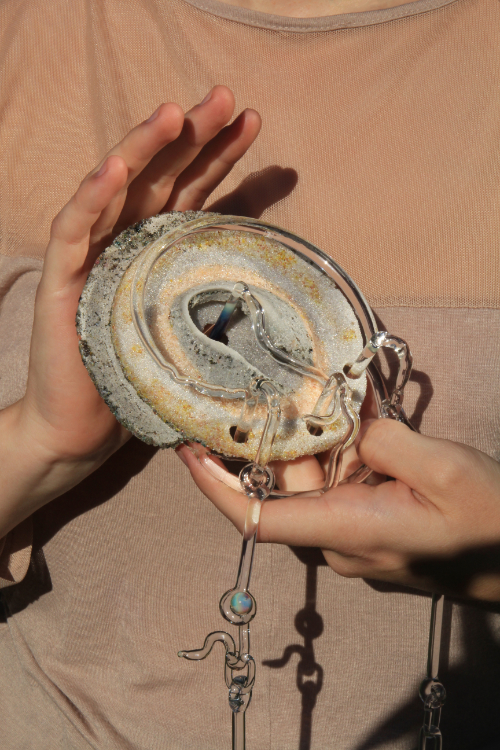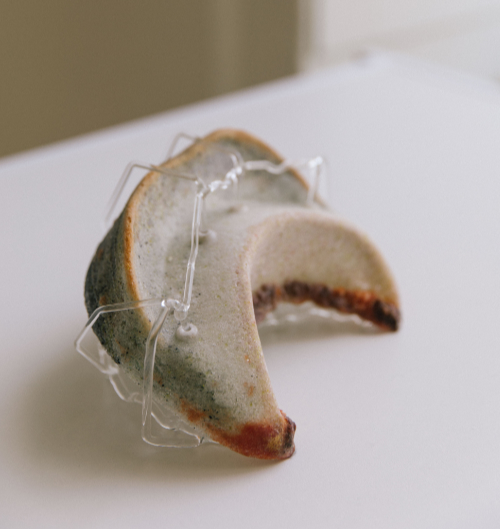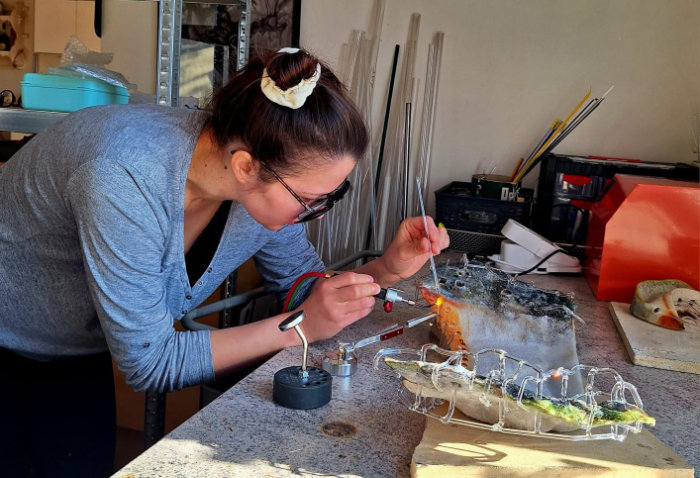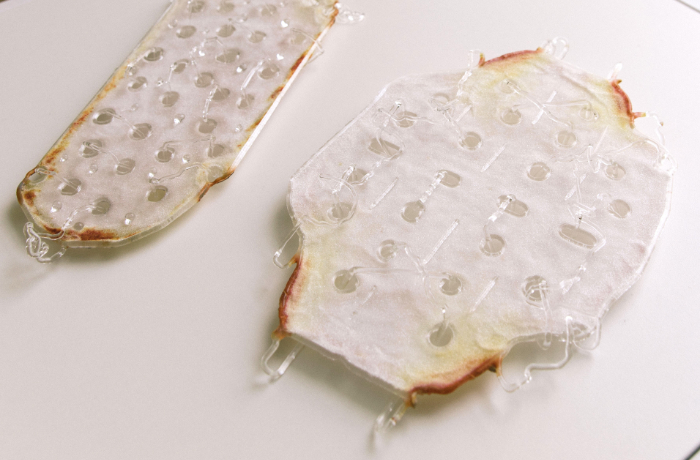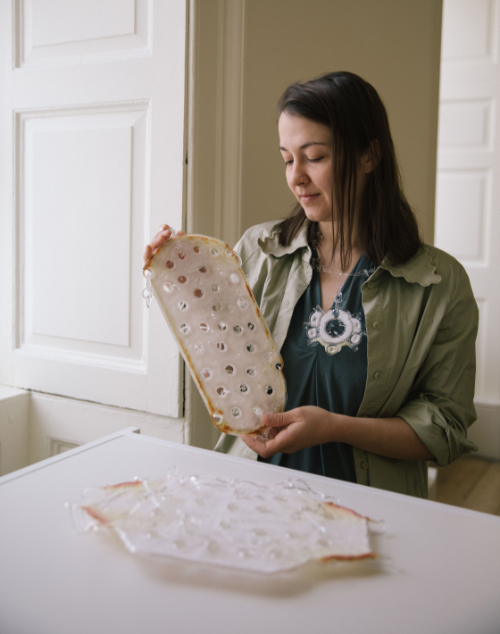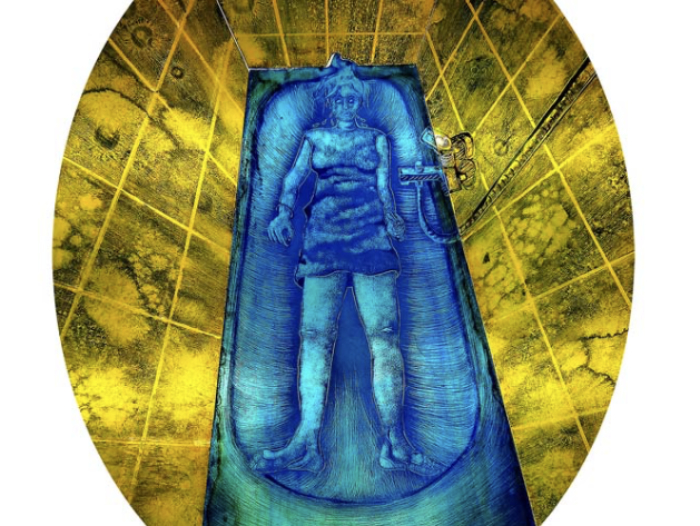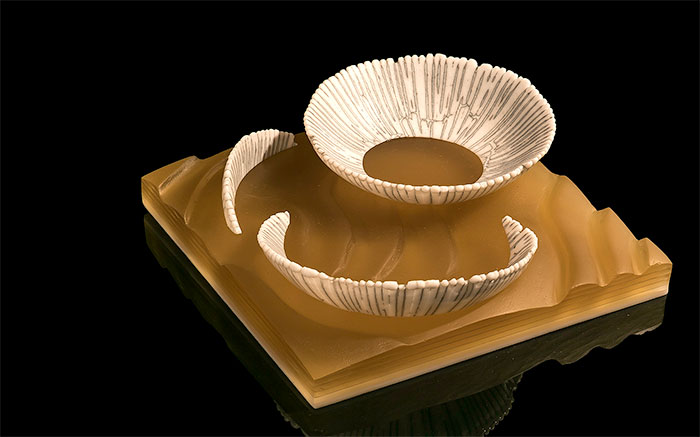
Canadian glass maker and educator Bob Leatherbarrow explains how he applies his scientific mind to the challenges of creating with glass powder, and describes how his ‘self-directed residencies’ have resulted in a variety of new techniques.
True confession: my 30-year artistic journey creating with textured, kiln-formed glass powders started by accident. When unexpected (and, I confess, unwanted) small cracks started appearing occasionally in my glass powder surfaces, I viewed them as failures and tried to get rid of them. However, they persisted, and I eventually decided that, instead of trying to ‘fix’ them, I should embrace them. So, I turned my sights to learning how to develop cracks consistently and predictably across powder surfaces. Drawing on my training as a scientist, I spent several months experimenting and, eventually, was able to create, at will, a pervasive network of cracks throughout an entire layer of glass powder (Figure 1).
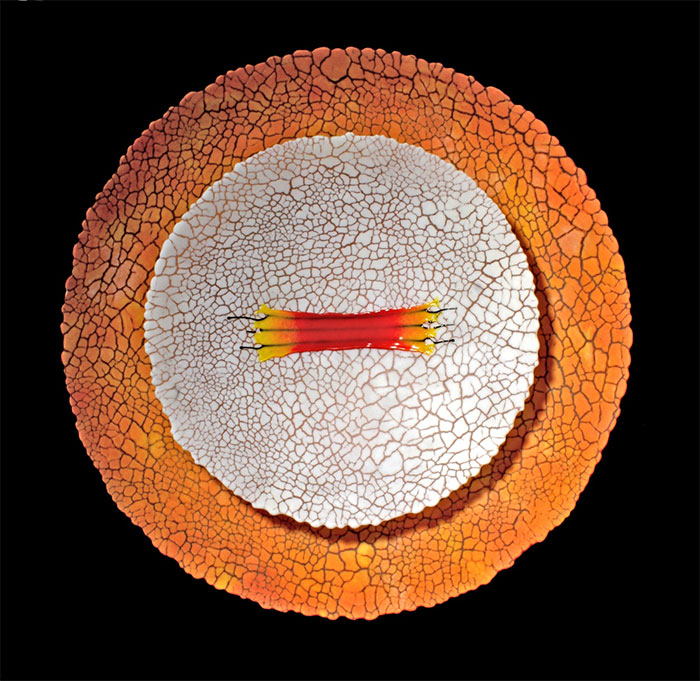
By experimenting, I had learned that if I sifted powder onto refractory fibre paper, saturated it with water and then manipulated the paper and powder, small cracks would develop throughout the powder. Then, if I placed the paper and powder on a kiln shelf and capped it with a layer of sheet glass, surface tension would widen the cracks during firing to full fuse. The result was an organic, crackled texture in the powder that was bonded onto the sheet glass.
My day job as a geologist involved using textures to interpret the origin of rocks, so these new glass powder textures resonated with me. Textures are important. They tell a story, a history, and help to inform a reality.
So began my journey down the rabbit hole of exploring kiln-formed glass powder textures. Ultimately, I investigated an entire warren-full of glass powder texture ideas, with many side trips down branching tunnels along the way.
The first stop involved blending and layering different opal powder colours to create a painterly effect that is entirely different to the effect of layering coloured sheet glass. My learning curve involved realizing that dark-coloured powders overpower light colours and that the sequence of layering powder colours is critical. I knew that understanding and using the chemical reactions between colours would allow me to outline patterns within the powders, with great effect (Figure 2).
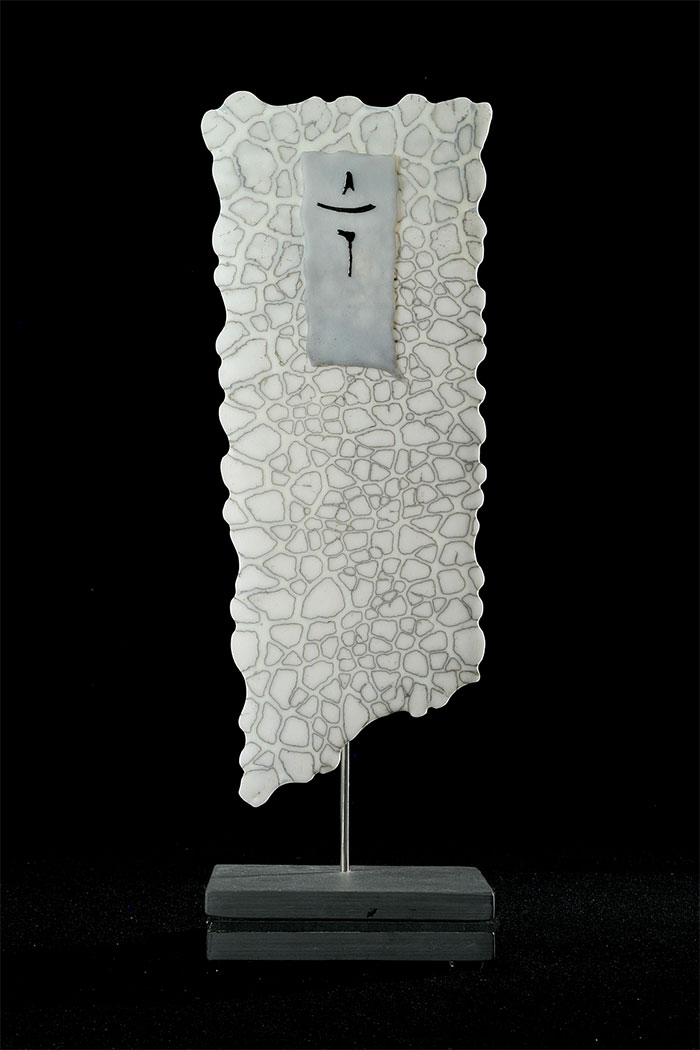
The next stop down in the warren occurred when my studio was closed for a year because of a move and massive renovation. To inaugurate my new studio, I decided to engage in a two-month ‘self-directed residency’, during which I would leave my comfort zone and try to develop new powder texture techniques. My training as an exploration geologist, and my background in science, project management and risk mitigation, guided me throughout the residency. I used the ‘scientific method’ to conduct experiments to determine critical factors in developing new textures. I kept the tests small and focussed on problem solving rather than on making precious pieces. And I wasn’t discouraged when tests failed; I learned and gained experience from each test.
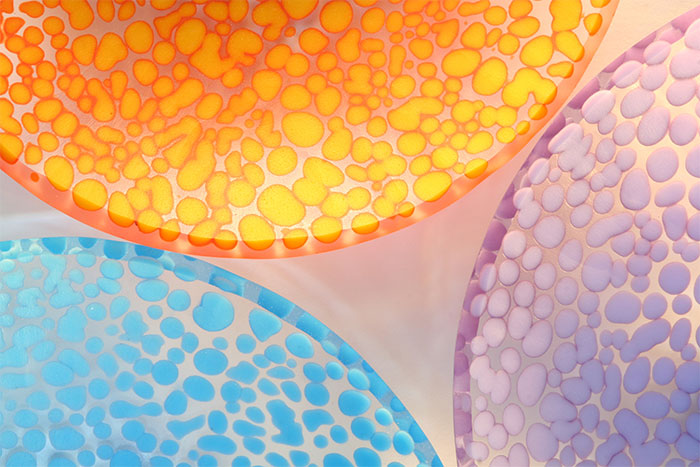
I developed three new styles of textured powders during my initial residency. The first was a ‘pebbled’ texture, consisting of round shapes floating in clear glass (Figure 3). Each of the pebbles had a darker coloured skin that highlighted the shape. The second style consisted of very regular and controlled linear patterns (Figure 4) that radiated from a central point and generally comprised alternating coloured strips. The third style consisted of radiating strips with more irregular organic edges (Figure 5).
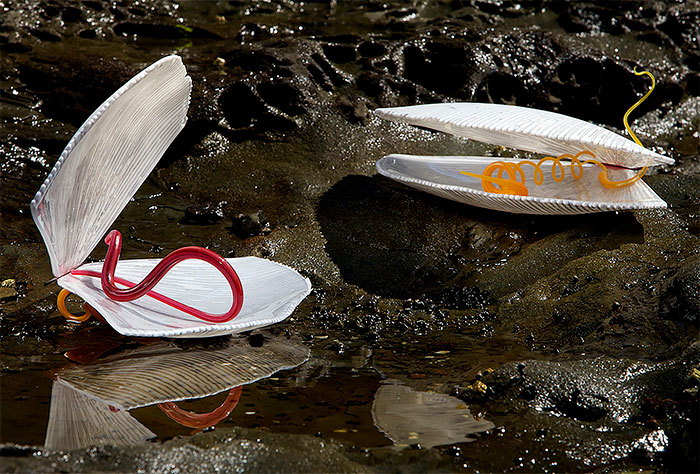
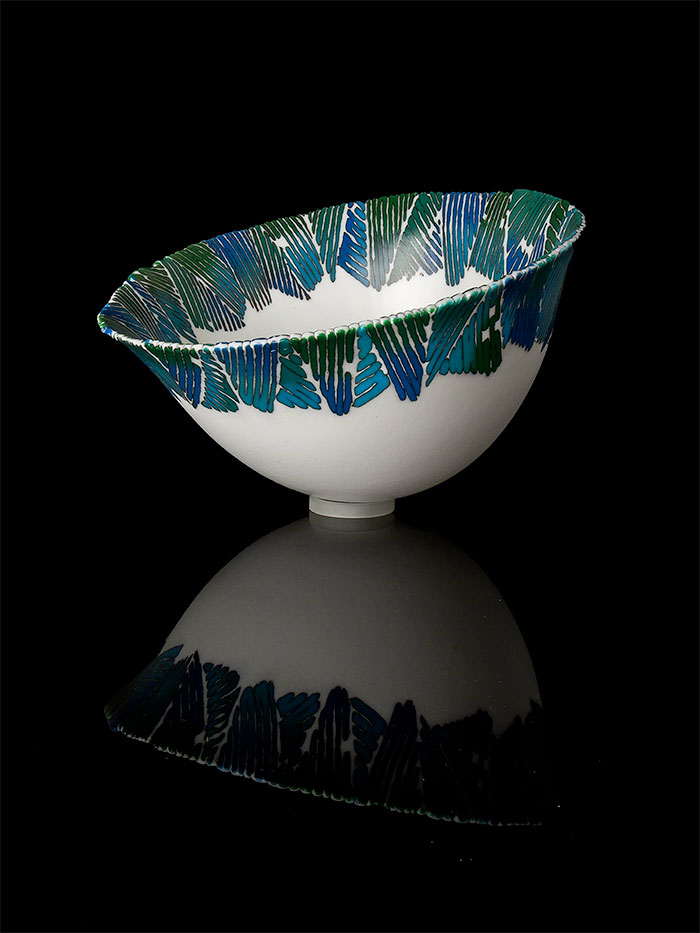
When I next ventured down the rabbit hole, I investigated the distortion of textured powders when pieces were slumped into elongated forms. The collection of goblets in Figure 6 illustrates how each of the three textures described above stretch when slumped through a drop-out mould.
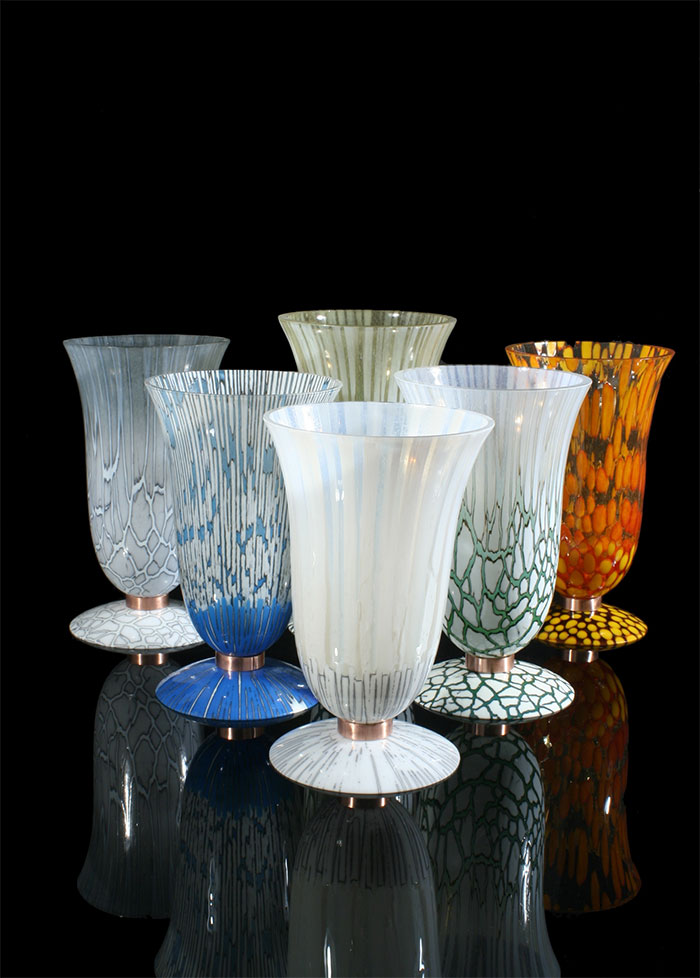
In another step I took in my textural journey down the rabbit hole, I incorporated sinuous, coloured veins and patches of different coloured textured powders. These features directly reflected my geological background (Figure 7).
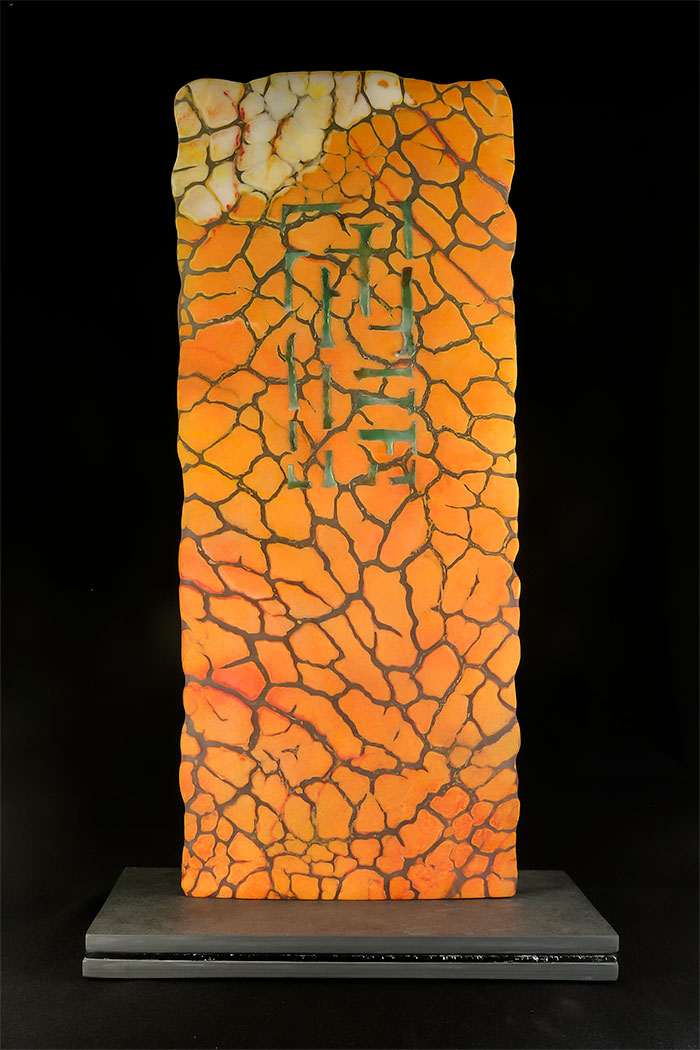
For years, I have been creating all the above signature textures using opal powders. However, during my most recent investigations, I revisited the idea of creating with transparent powders. During previous attempts with these, I had encountered problems with uneven colour saturation and an undesirable frosted appearance, due to trapped air. I overcame these problems after a round of experimentation, which resulted in a new series of brightly coloured pieces (Figures 8 and 9).
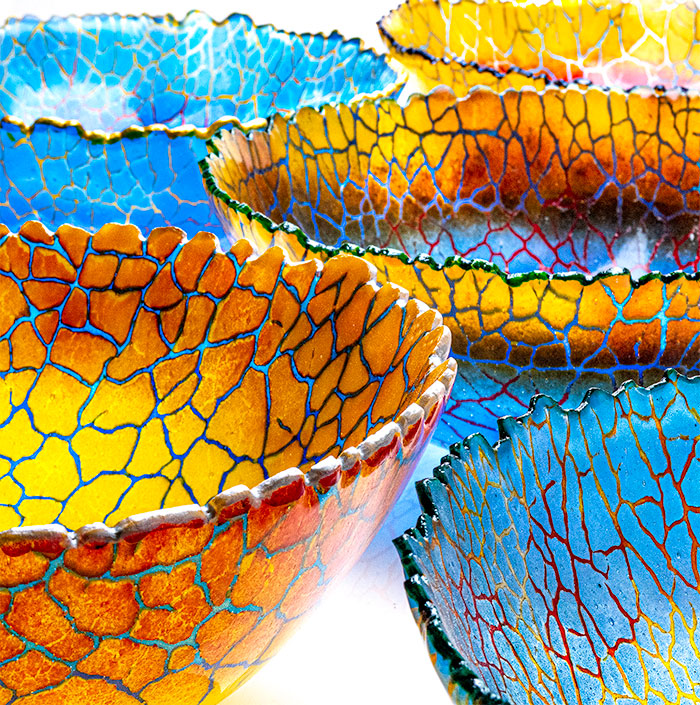
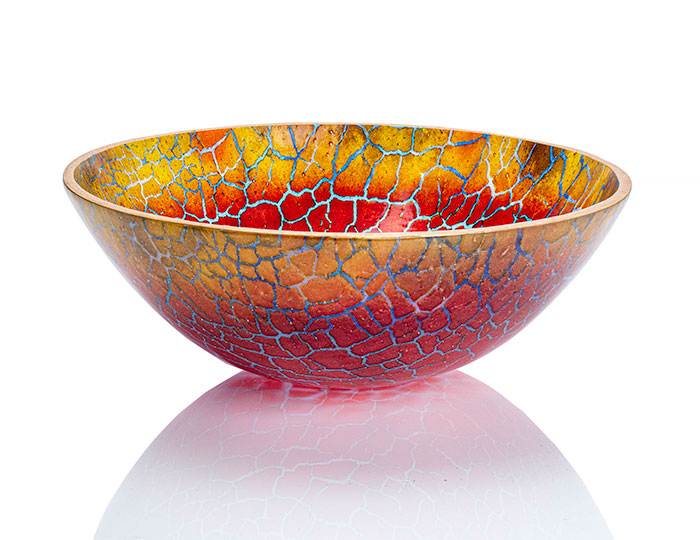
Although textured powders and the stories they tell are the dominant themes of my glass art, I do have other influences. Many pieces reference my background as a geologist. My desire in these explorations is to capture the elegance of natural features. There are two viewpoints to most of my pieces: one is the overall appearance when viewed from a distance and the other is the detail apparent only when viewed up close. I encourage the viewer to look carefully, make observations, and ponder the origin of each piece.
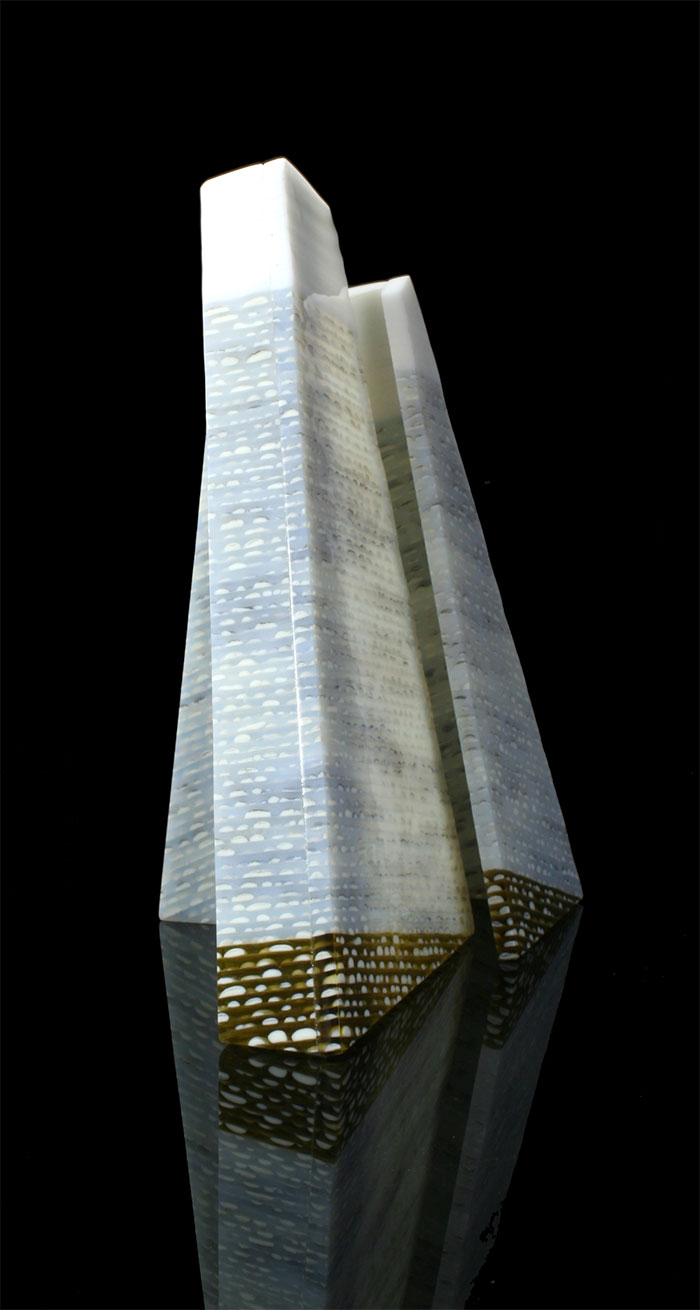
The sculpture titled ‘Mount Harris’ (Figure 10) distils the complexity of a mountain into a series of lines and planes. The tryptic wall piece titled ‘Drift’ (Figure 11) portrays the elegance of offset segments of the Atlantic seafloor caused by spreading along the Mid Atlantic Ridge. Sometimes my pieces represent natural processes, such as the broken bowls and waveforms in ‘Flotsam’ (Main feature image).
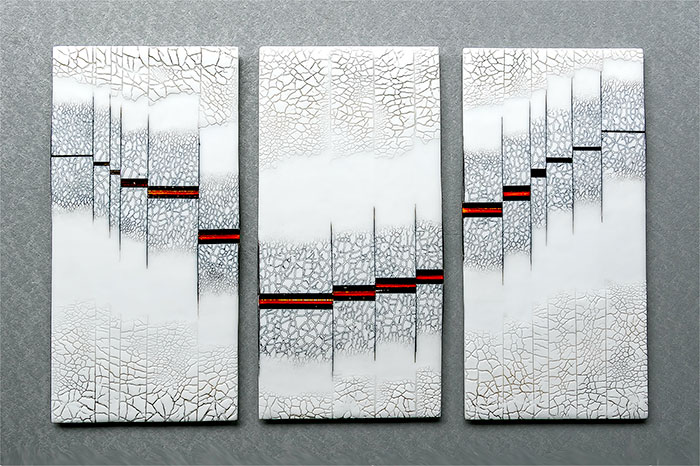
Much of my artwork embraces the history of glass made as functional objects for serving food and drink. One of my roles as an artist is to honour that functional past by making pieces that shine a light on the qualities of the medium of glass, highlight its delicate, yet enduring, nature, and, in doing so, make the most beautiful objects that I can. My installation ‘Brunch’ (Figure 12) is an homage to four artists who have influenced my career: William Morris, Andy Goldsworthy, Piet Mondrian, and Lawren Harris. I made a place setting for each artist that reflects his style and philosophy. The installation also honours the simple daily pleasure of sharing a meal with family and friends.
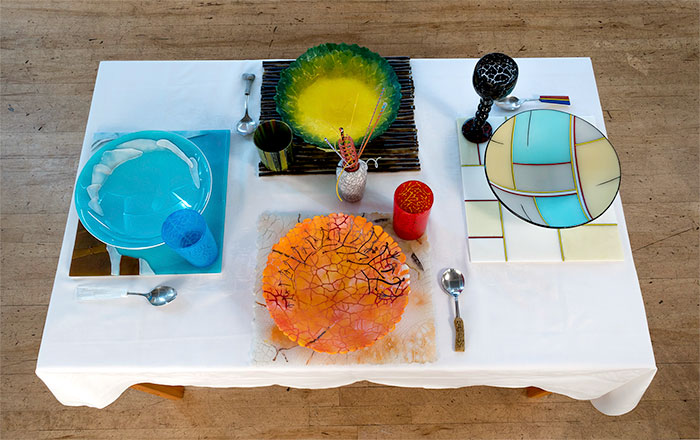
Another major, and thoroughly enjoyable, part of my practice as a glass artist is education. To this end I have: taught workshops and international online and in-studio masterclasses; written e-books and numerous magazine articles on my signature powder techniques; taught techniques via video, and helped individuals with their questions on social media.
My journey as a glass artist has truly paralleled my career as an exploration geologist. I am always looking for new ways to work with powder, to play the ‘what if’ game and see where that next experiment leads me. Every once in a while, I even think I have powders all figured out. Then something happens, usually something completely unexpected. Almost immediately, I feel a tap on my shoulder and turn around, only to be greeted by a White Rabbit pointing to an unexplored rabbit hole. Like Alice, I am curious and I eagerly descend to see where it leads.
About the artist
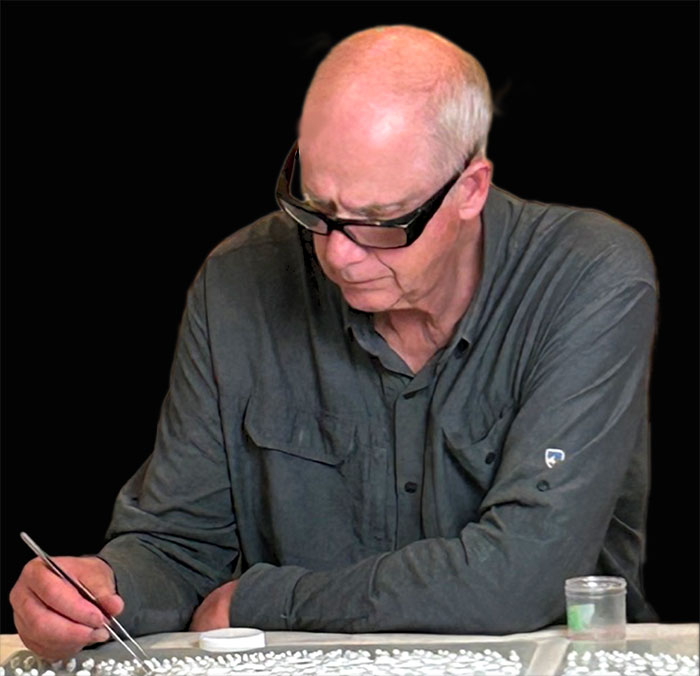
Bob Leatherbarrow established Leatherbarrow Glass Studio in Calgary, Canada, in 1988 and has created original, kiln-formed glass ever since. Known for his innovative styles, techniques, and designs, Bob has taken an experimental approach to developing unique textures and colour palettes using glass powders. His kiln-formed glass bowls and sculptures explore the subtle hues and delicate beauty of naturally occurring textures and encourage the viewer to ponder their origin.
In 2008 Bob moved his studio to Salt Spring Island, British Columbia, Canada.
Find out more about Bob Leatherbarrow via his website.
Main feature image: Small, broken bowls are ‘washed up’ on a sandy shore in this piece called ‘Flotsam’. Bob invites the viewer to ponder their origin. All images by Bob Leatherbarrow except Figure 4.
